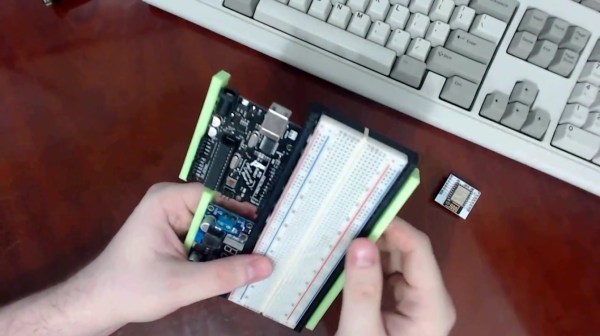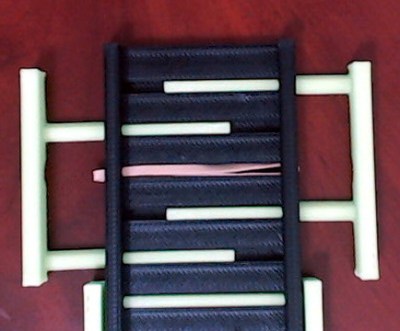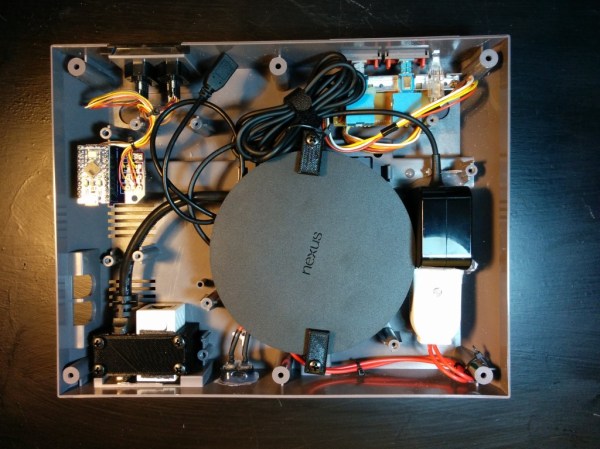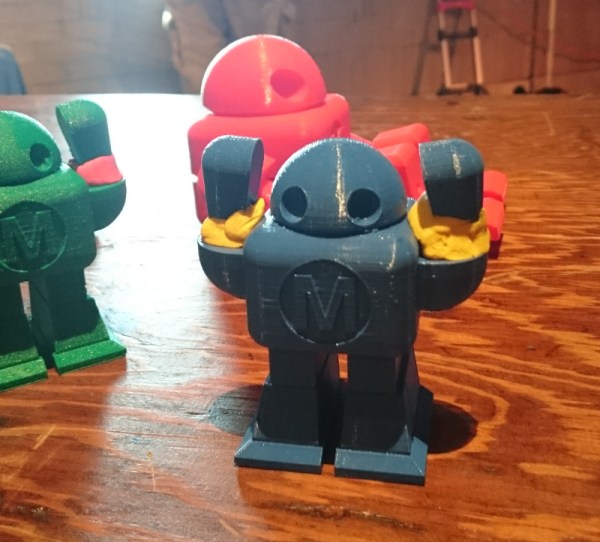The 5th annual Kansas City Maker Faire was as fun as ever, but it definitely felt different from previous years. There seemed to be an unofficial emphasis on crafts this year, and I mean this in the broadest sense of the word. There was more exposure for the event in the local media, and this attracted a wider variety of faire-goers. But the exposure also brought more corporate sponsorship. This wasn’t an exclusively bad thing, though. For instance, several people from Kansas City-based construction firm JE Dunn were guiding mini makers through a birdhouse build.
Many of the this year’s booths were focused on a particular handicraft. A local music shop that makes custom brass and woodwind instruments had material from various stages of the building process on display. Several tables away, a man sat making chainmaille bags. At one booth, a girl was teaching people how to fold origami cranes. Several makers had various geek culture accessories for sale, like a shoulder bag made from a vintage Voltron sweatshirt. The guys from SeeMeCNC made the 12-hour drive with the Part Daddy, their 17-foot tall delta printer. They printed up a cool one-piece chair on Saturday, then made a child-sized version of it on Sunday.
The entire lower level of the venue was devoted to a series of exhibits related to the film and television industry. Collectively, they covered the entire production process from the casting call to the red carpet. Several local prop and costume makers were showing off their fantastic creations, including [Steven] of SKS Props. He started making video game props for fun a few years ago. These days, his work adorns the offices of some of those same game companies.
Of course, there was plenty to see and do outside, too. All the kids playing human foosball were having a blast. LARPers larped next to lowriders and food trucks, power wheels raced, and a good time was had by all.

Tiny chair printed on the Part Daddy by SeeMeCNC

This is clearly an exceptional R2 unit.

A husband and wife team make arty robots using antique cameras, test equipment, and tins.

A luthier explains his process to an onlooker..

Some of the well-detailed costumes on display.

Masks by SKS Props.

JE Dunn hammered the weekend away helping kids make birdhouses.

Nerdly housewares were plentiful this year.

A peek at the film and television production process.

Tiny chair being printed on the Part Daddy.




 While [Pat]’s inspiration came from the aforementioned Stickvise, the new 3d-printed vice is just what you’ll need before you’re ready to do the soldering. The vice is spring-loaded using rubber bands. The base is sized to fit a standard breadboard in the center with clamping arms on either side to hold dev boards such as an Arduino. This innovative yet simple de”vice” grips boards well enough that you won’t be chasing them around your desk, knocking wires out of place, anymore.
While [Pat]’s inspiration came from the aforementioned Stickvise, the new 3d-printed vice is just what you’ll need before you’re ready to do the soldering. The vice is spring-loaded using rubber bands. The base is sized to fit a standard breadboard in the center with clamping arms on either side to hold dev boards such as an Arduino. This innovative yet simple de”vice” grips boards well enough that you won’t be chasing them around your desk, knocking wires out of place, anymore.






















